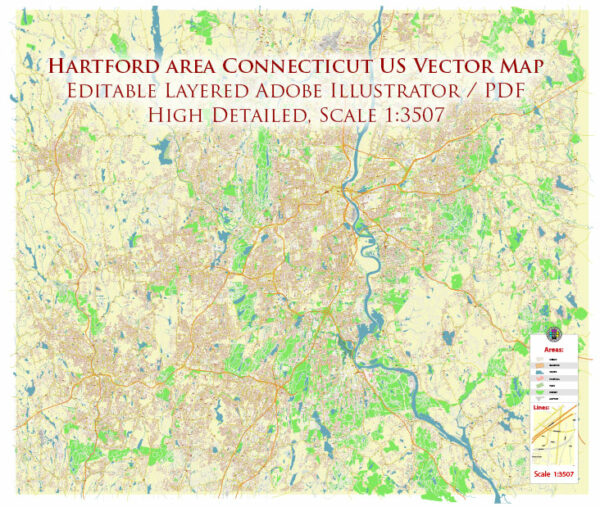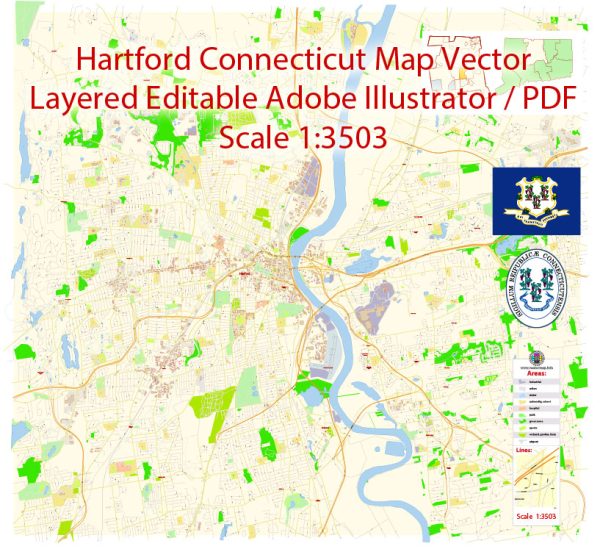Hartford, Connecticut, has a rich history of urban development that spans centuries. Here is an overview of key points in the city’s urban development:
- Colonial Era (1636-1776): Hartford was founded in 1636 by Thomas Hooker and a group of settlers from Massachusetts. The city’s location along the Connecticut River made it a strategic trading and transportation hub. During this period, the city developed as a center for commerce and government.
- Industrialization (19th Century): The 19th century saw Hartford’s transformation into an industrial powerhouse. The city became a major center for manufacturing, particularly in the areas of firearms, insurance, and publishing. Colt’s Patent Fire-Arms Manufacturing Company, founded by Samuel Colt, played a significant role in the city’s industrial growth.
- Insurance Capital of the World: Hartford gained the nickname “Insurance Capital of the World” due to its prominence in the insurance industry. Major insurance companies, such as Aetna and The Hartford, were founded in the city during the 19th century. The insurance sector had a profound impact on the city’s economy and urban landscape.
- The Mark Twain House and Harriet Beecher Stowe Center: Literary figures Mark Twain and Harriet Beecher Stowe lived in Hartford during the 19th century. Their historic homes, the Mark Twain House and the Harriet Beecher Stowe Center, are important cultural landmarks that attract visitors interested in literature and history.
- Urban Renewal (20th Century): Like many other American cities, Hartford experienced urban renewal efforts in the mid-20th century. These initiatives aimed to revitalize urban areas but often resulted in the demolition of historic buildings and the displacement of communities. The construction of Interstate 84 in the 1960s had a significant impact on the city’s layout.
- Riverfront Recapture: In the late 20th century and continuing into the 21st century, efforts were made to reconnect Hartford with its waterfront. The Riverfront Recapture project sought to revitalize the city’s riverfront areas, creating parks, recreational spaces, and walking paths along the Connecticut River.
- Economic Challenges: Hartford, like many post-industrial cities, faced economic challenges in the late 20th century with the decline of manufacturing. The city experienced population loss and economic struggles, leading to efforts to diversify the economy and attract new businesses.
- Downtown Development: Recent years have seen efforts to revitalize downtown Hartford, including the construction of new residential and commercial spaces. The Front Street District and the Adriaen’s Landing development are examples of initiatives aimed at rejuvenating the city’s core.
- Cultural Institutions: Hartford is home to various cultural institutions, including the Wadsworth Atheneum (America’s oldest public art museum), the Connecticut Science Center, and the Hartford Stage Company. These institutions contribute to the city’s cultural richness and draw visitors.
Hartford’s urban development reflects the broader patterns seen in many American cities, with phases of industrialization, suburbanization, and efforts to rejuvenate urban areas for the 21st century. The city continues to evolve, facing both challenges and opportunities in its ongoing urban development.



 Author: Kirill Shrayber, Ph.D.
Author: Kirill Shrayber, Ph.D.